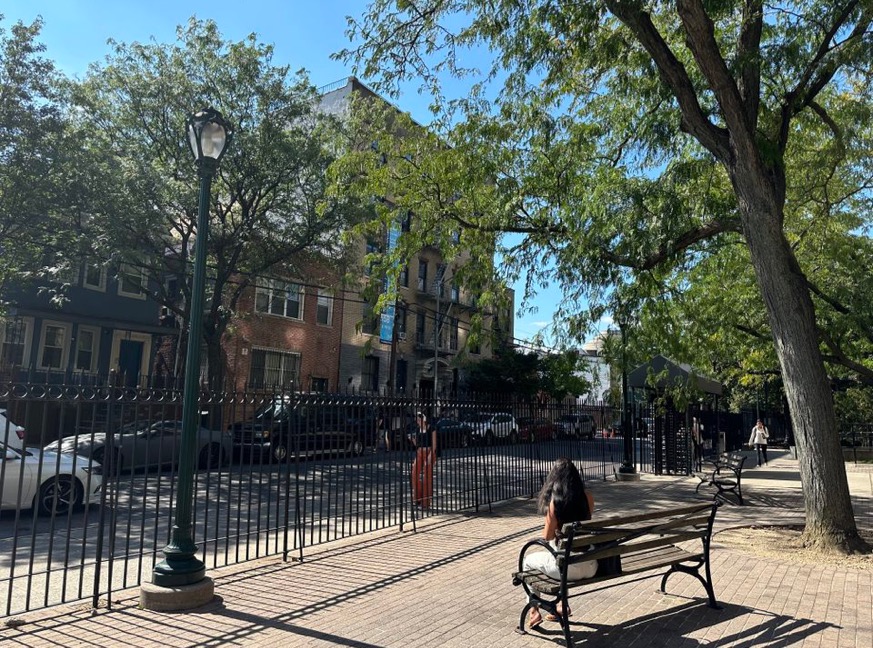The end of the semester is approaching at Fordham University and students are starting to consider their housing options for the next semester. Many students choose to move off campus starting their sophomore or junior year. But why is this? Off-campus housing is cheaper and gives students more freedom; however, there are also downsides. It is better to live off campus, but each choice has advantages and disadvantages, and students should choose depending on their own preferences.
From my experience, most students decide to move off campus because they dislike the setup of the apartments on campus and the regulations that come with it. For people who want a kitchen and a shared living space, there are only two options on campus: Walsh Hall and Salice-Conley/Campbell Halls. Walsh Hall is the oldest and its setup includes generic blue faux leather sofas and wooden tables. The kitchen is extremely narrow, with only one oven, stove and shallow sink. The building was inaugurated in the 1970s and has been occupied by students since, which is why many of the appliances are old-fashioned and worn out. Students who choose to live in Walsh have two options: a four-person apartment with one bathroom and two shared bedrooms, or a six-person apartment with two bathrooms and three shared bedrooms. However, Walsh Hall’s advantages are that it is located in the middle of campus, which gives students quick access to all the academic buildings. It has its gate, which makes it easier to go in and out of campus. The most significant advantage of Walsh Hall is that it has washers and dryers on every even-numbered floor and a large laundry room in the basement, followed by an expansive study lounge with a TV, a printer and vending machines.
The other option is the Salice-Conley and Campbell Halls. These two almost identical buildings were inaugurated in 2010 and are the newest residence halls on campus. The biggest downside to these buildings is their location. They are situated at the end of campus, next to the freshmen dorms and the MetroNorth station, but a bit further away from Arthur Ave and most academic buildings. Yet, many students choose to live in these apartments because they include a microwave and a dishwasher, and most appliances appear more modern and homey. Another reason these halls are chosen over Walsh is that they allow students to have single rooms instead of doubles. Other amenities of these buildings are a laundry room on the first floor for all residents and shared spaces with sofas and tables on each floor for people to hang out outside of their apartments.
These buildings are what many students are looking for, and therefore, they choose to stay on campus. However, some disadvantages make other students like myself decide to move off campus. The first one is that each of the buildings has a security guard that controls that only residents of the buildings come in, and if there are any guests, they have to be Fordham students and leave by 3 a.m., or their host will get fined 60 dollars. This becomes an inconvenience for students who might have friends visiting over long weekends or for people who just want to enjoy themselves with their friends until the late-night hours. Another reason why on-campus housing is not the best option is that every floor has resident assistants. Upper-level students want to feel freer in their own space than answering to fellow students. However, resident assistants must meet with their residents at least twice a semester and check their rooms for prohibited items. In addition, Fordham has one of the highest rates for on-campus housing in the United States, and living off-campus can be cheaper than living at the dorms.
Luckily, many options outside off-campus are less expensive and allow students the freedom they seek to go into adult life. LandSeAir, a real estate group, and BlueSky Living, an apartment building company, are the two most relied-on options for students who want to live off campus. They offer apartments and even houses for students to live in, usually leasing for a year with an opportunity to extend the lease. Living off campus with any of these options ranges between 800 to 1,800 dollars per student per month if everybody had a single room. This is cheaper than on-campus housing, ranging from $1,900 per student per month for double rooms to $2,200 for single rooms. Some off-campus apartments also ask for fees and extra costs that might raise up the price, but it is never enough to top the Fordham housing. Many of these off-campus options include entire houses with balconies or backyards and in-unit laundry, which does not compare to the narrow apartments Fordham offers. Yet not all apartments are the same, and many students who live off campus have to pay for laundry and walk to the laundromat to wash their clothes, which can become an inconvenience. Additionally, many off-campus apartments have a long distance from campus, which makes it harder to go to campus facilities such as the library or the gym.
What makes off-campus apartments better than the on-campus ones is the number of options, because not only are they always cheaper than the on-campus apartments, but they also allow students to choose which layout they want, the proximity to campus, with which amenities, etc. Fordham housing gives students fewer options, less freedom and higher prices, which contrasts from what most students seek. If Fordham worked on giving students a more personalized experience for campus dorming, fewer students would decide to move off campus.
Agustina Kohen Mangas, FCRH ’25, is a new media and digital design and communication & culture major from Buenos Aires, Argentina.









































































































































































































